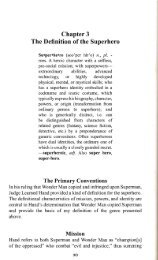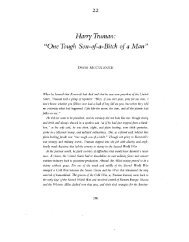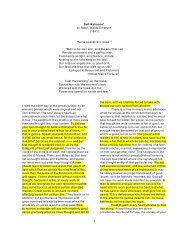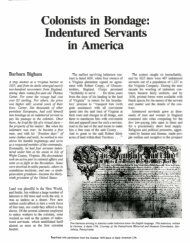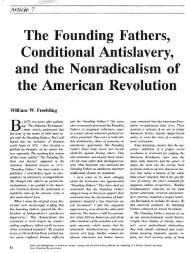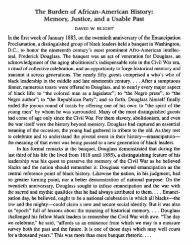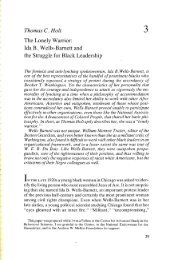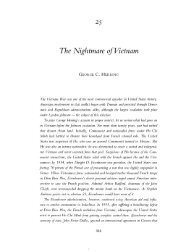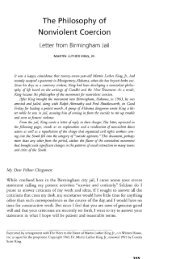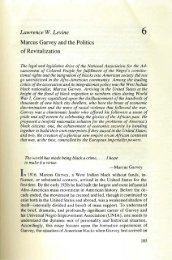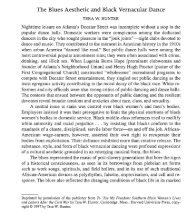Mary - Journeytohistory
Mary - Journeytohistory
Mary - Journeytohistory
Create successful ePaper yourself
Turn your PDF publications into a flip-book with our unique Google optimized e-Paper software.
Chapter 11Civil War225September 15, 1861, he opened a Sunday School for blacks in the home of formerPresident Tyler, and two days later he began the first day school, with <strong>Mary</strong>S. Peake as the teacher. Within a few months the American Missionary Associationhad established schools for blacks at Hampton, Norfolk, Portsmouth, andNewport News, Virginia, and on several plantations. By 1864 more than 3,000blacks were in school with fifty-two teachers, of whom at least five were black.They were paid by the associations, but the government furnished subsistence.Several schools were established in Washington for refugees, and thefreedmen's relief associations of Boston and Philadelphia supplied teachers. InNorth Carolina, the chaplains of Northern regiments took an early interest inthe education of blacks, and later the American Missionary Association and relieforganizations extended their programs into this area. The first day schoolswere set up in July 1863. One year later there were schools at Beaufort, Washington,Plymouth, Morehead, and other places, with 3,000 students and sixtysixteachers. Evening schools were also established for adults. General Butlertook great interest in this work and sponsored the erection ofEX1)a n ion ofa large building at Hampton to accommodate 800 students.The New England Freedmen's Aid Society started education for blacks in South Carolina in 1862 when thirty-one menand women arrived as teachers. Schools were established on larger plantationsand in towns, and by June 1863 it was estimated that 5,000 blacks were inschool. Gradually education for blacks was extended to most areas occupied byUnion troops. In 1863 General Banks established a system of public educationunder the Department of the Gulf, and a Board of Education for Freedmen supervisedthe schools. By the end of the next year ninety-five schools had beenset up under the department, with 162 teachers, of whom 130 were Southernersincluding several blacks. There were 9,571 students in day schools, and another2,000 in evening schools.The enthusiasm of Northerners for the education of blacks was tremendous.In the last year of the war at least 1,000 young Northern men and womenwere teaching and caring for ex-slaves. These teachers brought with themslates, pencils, spelling books, readers, blackboards, and chalk. Although theymet strong opposition from a majority of Southern whites, some Southernersnot only favored but contributed to the success of schools for blacks. Allthrough the South were to be found native whites teaching blacks before theclose of the war.Some blacks established schools for their own people. In Natchez, for example,three schools were started during the war by black women. In Savannah,blacks could boast not only of two large schools that they had founded,but also of a black board of education to determine their policies. Most schoolsfor blacks had poor facilities, inadequate supplies, and insufficient teachers,but African Americans attended them in larger and larger numbers. The peopleresponsible for establishing these schools-Northerners and Southerners,whites and blacks-made a most significant contribution to the adjustment ofa people emerging from slavery.education forblack.



